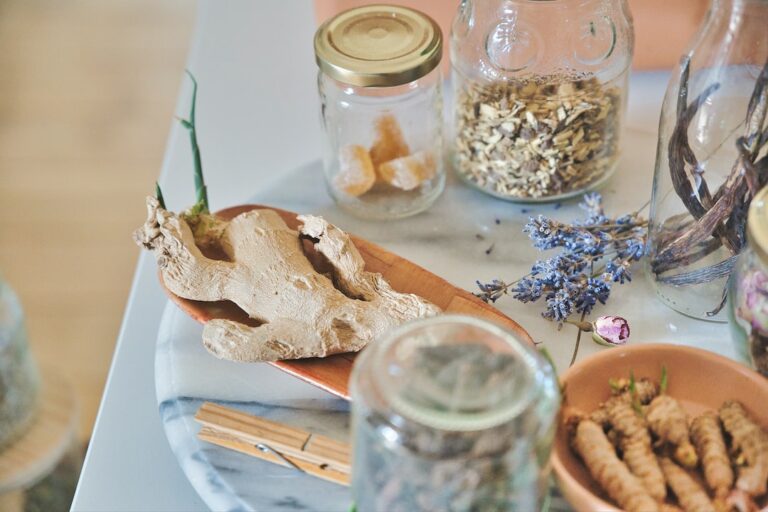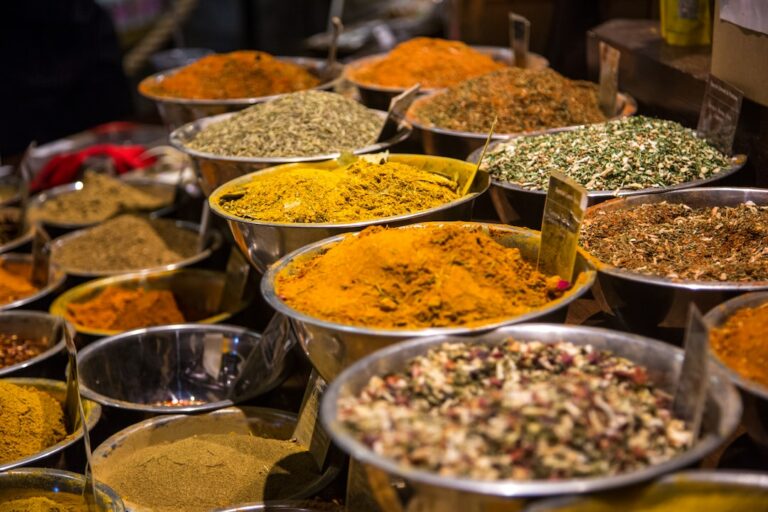Introduction
What is allspice?
Allspice is a versatile spice that is derived from the dried berries of the Pimenta dioica tree, which is native to the Caribbean. It is commonly used in both sweet and savory dishes, adding a warm and aromatic flavor. Allspice is often referred to as the “spice of all spices” due to its unique combination of flavors, which resemble a mixture of cinnamon, cloves, and nutmeg. In addition to its culinary uses, allspice has been used for centuries as a medicinal plant for pain relief. It contains compounds that have analgesic properties and can help alleviate various types of pain, including headaches, muscle aches, and toothaches. The active ingredient in allspice, eugenol, is a natural pain reliever and is often used in topical pain relief products. Overall, allspice is not only a flavorful spice but also a valuable natural remedy for pain.
History of allspice
Allspice, also known as pimento, is a versatile spice that is derived from the dried berries of the Pimenta dioica tree. It has a rich history that dates back to the ancient Mayans and Aztecs, who used it for both culinary and medicinal purposes. The name ‘allspice’ was given to this spice because its flavor is reminiscent of a combination of cinnamon, cloves, and nutmeg. In terms of its medicinal properties, allspice contains compounds that have been found to have antibacterial and antifungal properties, making it a popular ingredient in herbal antibiotics. Overall, allspice is a unique and flavorful spice that has a long and fascinating history.
Uses of allspice
Allspice is a versatile spice that is commonly used in various cuisines around the world. It is derived from the dried berries of the Pimenta dioica tree, which is native to Central America and the Caribbean. The flavor of allspice is warm, aromatic, and reminiscent of a combination of cinnamon, cloves, and nutmeg. Due to its unique taste, allspice is used in both sweet and savory dishes. It is a key ingredient in many traditional recipes, including Jamaican jerk seasoning, pumpkin pie, and mulled wine. Additionally, allspice can be found in various spice blends, such as curry powder and garam masala. The bold keywords for this paragraph are: allspice, versatile spice, cuisines, dried berries, Pimenta dioica tree, Central America, Caribbean, flavor, cinnamon, cloves, nutmeg, sweet dishes, savory dishes, key ingredient, Jamaican jerk seasoning, pumpkin pie, mulled wine, spice blends, curry powder, garam masala.
Composition

Chemical composition of allspice
Allspice, also known as pimento, is a versatile spice that is widely used in cooking and baking. It is derived from the dried berries of the Pimenta dioica tree, which is native to the Caribbean and Central America. The spice gets its name from its unique flavor, which is said to resemble a combination of cinnamon, cloves, and nutmeg. The chemical composition of allspice includes essential oils such as eugenol, which gives it its distinct aroma and flavor. Other compounds found in allspice include caryophyllene, myrcene, and limonene. These compounds contribute to the spice’s antioxidant and anti-inflammatory properties. Allspice is commonly used in a variety of dishes, including soups, stews, sauces, and desserts. Its warm and spicy flavor adds depth and complexity to both sweet and savory recipes. When using allspice, it is important to use it sparingly as its flavor can easily overpower other ingredients. Overall, allspice is a key ingredient in many cuisines around the world and is beloved for its unique taste and aroma.
Key compounds in allspice
Allspice, also known as Pimenta dioica, is a spice that is derived from the dried berries of the Pimenta dioica tree. It is commonly used in Caribbean, Middle Eastern, and Latin American cuisines. The key compounds found in allspice are eugenol, caryophyllene, and myrcene. These compounds contribute to the unique flavor and aroma of allspice. Eugenol, in particular, gives allspice its warm and spicy flavor, while caryophyllene adds a hint of peppery taste. Myrcene, on the other hand, provides a subtle citrusy note. The combination of these compounds makes allspice a versatile spice that can be used in both sweet and savory dishes. It pairs well with meats, vegetables, baked goods, and even beverages like mulled wine. Next time you come across a recipe that calls for allspice, be sure to include this flavorful and aromatic spice in your dish.
Health benefits of allspice
Allspice, also known as pimento, is a versatile spice that is commonly used in cooking. It is derived from the dried berries of the Pimenta dioica tree, which is native to the Caribbean and Central America. Allspice has a warm and aromatic flavor, similar to a combination of cinnamon, cloves, and nutmeg. In addition to its culinary uses, allspice also offers several health benefits. It contains a variety of beneficial compounds, including antioxidants and anti-inflammatory properties, which can help promote overall health. Allspice has been used in traditional medicine for centuries to treat digestive issues, relieve pain, and reduce inflammation. It is also believed to have antimicrobial properties and may help boost the immune system. Incorporating allspice into your diet can be a flavorful way to enhance your meals while promoting health with herbs.
Culinary Uses

Allspice in cooking
Allspice is a versatile spice that is commonly used in cooking. It is derived from the dried berries of the Pimenta dioica tree, which is native to the Caribbean. With its warm and aromatic flavor, allspice adds depth and complexity to a wide range of dishes. It is often used in both sweet and savory recipes, including desserts, marinades, and stews. The key to using allspice effectively is to use it in moderation, as its flavor can easily overpower other ingredients. Some popular dishes that feature allspice include Jamaican jerk chicken, pumpkin pie, and mulled wine. Overall, allspice is a must-have spice in the kitchen for anyone looking to add a unique and flavorful twist to their cooking.
Recipes using allspice
Allspice is a versatile spice that is commonly used in various recipes. It is made from the dried berries of the Pimenta dioica tree, which is native to the Caribbean. The name ‘allspice’ comes from its unique flavor, which is a combination of cinnamon, cloves, and nutmeg. This spice is known for its warm and aromatic taste, making it a popular ingredient in both sweet and savory dishes. It adds depth and complexity to recipes, enhancing the overall flavor profile. Some popular recipes that use allspice include Jamaican jerk chicken, pumpkin pie, and mulled wine. The use of allspice in these recipes adds a distinct and delightful flavor that elevates the dish to a whole new level. So, if you’re looking to add a touch of warmth and complexity to your culinary creations, consider using allspice.
Substitutes for allspice
Allspice is a popular spice used in many cuisines around the world. It is known for its warm and aromatic flavor, which is a combination of cinnamon, cloves, and nutmeg. Allspice is commonly used in baking, as well as in savory dishes like stews and marinades. It adds a unique depth of flavor to dishes and is often used as a substitute for other spices. When using allspice in cooking, it is important to use it sparingly as its flavor can be quite strong. If you don’t have allspice on hand, there are several substitutes you can use. Some common substitutes for allspice include a combination of cinnamon, cloves, and nutmeg, or individual spices like cinnamon, cloves, or nutmeg. These substitutes will provide a similar flavor profile to allspice and can be used in equal amounts in recipes. Experiment with different combinations to find the one that best suits your taste preferences.
Cultural Significance

Allspice in different cuisines
Allspice is a versatile spice that is widely used in different cuisines around the world. It is known for its warm and aromatic flavor, which resembles a combination of cinnamon, nutmeg, and cloves. Allspice is commonly used in both sweet and savory dishes, adding depth and complexity to various recipes. In Caribbean cuisine, allspice is a key ingredient in jerk seasoning, giving dishes a bold and spicy flavor. In Middle Eastern cuisine, it is often used in meat dishes and stews, providing a rich and fragrant taste. Additionally, allspice has been recognized for its potential health benefits, including its antiviral properties. Studies have shown that allspice contains compounds that may help fight against certain viruses. This makes it a valuable addition to the kitchen pantry, not only for its culinary uses but also for its potential medicinal benefits.
Traditional uses of allspice
Allspice, also known as Pimenta dioica, is a versatile spice that is commonly used in traditional medicine and pharmaceuticals. Its unique flavor, which combines the tastes of cinnamon, cloves, and nutmeg, makes it a popular ingredient in a variety of dishes. In traditional medicine, allspice has been used to treat various ailments, including digestive issues, inflammation, and pain relief. Its medicinal properties are attributed to its high concentration of essential oils and antioxidants. Additionally, allspice has been used in the production of pharmaceutical medicine, where it is incorporated into capsules, tablets, and topical creams. Its natural compounds have shown potential in the treatment of certain diseases and conditions. Overall, the traditional uses of allspice in both medicine and pharmaceuticals highlight its importance and versatility as a valuable spice.
Symbolism of allspice
Allspice, also known as Pimenta dioica, is a versatile spice that is widely used in both culinary and natural medicine practices. It is native to the Caribbean and Central America and is derived from the dried berries of the allspice tree. The name ‘allspice’ is derived from its unique aroma, which is reminiscent of a combination of cinnamon, cloves, and nutmeg. In culinary applications, allspice is often used in both sweet and savory dishes, adding a warm and slightly spicy flavor. In natural medicine, allspice is believed to have various health benefits, including anti-inflammatory and digestive properties. It is often used in herbal remedies and as a natural remedy for ailments such as indigestion and muscle pain. Allspice is an integral part of the natural medicine series, showcasing its significance in traditional healing practices. With its rich history and diverse uses, allspice continues to be a staple ingredient in many cuisines and natural medicine practices.
Production and Trade

Growing allspice
Allspice, also known as pimento, is a versatile spice that is commonly used in cooking and baking. It is derived from the dried berries of the Pimenta dioica tree, which is native to the Caribbean and Central America. Growing allspice requires a warm and humid climate, making it ideal for tropical regions. The tree can grow up to 40 feet tall and produces small white flowers that eventually develop into berries. The berries are harvested when they are green and unripe, and then dried in the sun until they turn brown. Allspice has a unique flavor that is reminiscent of a combination of cloves, cinnamon, and nutmeg. It is commonly used in both sweet and savory dishes, adding a warm and spicy flavor. In addition to its culinary uses, allspice also offers several health benefits. It is rich in antioxidants and has anti-inflammatory properties. Allspice is also believed to aid in digestion and relieve gastrointestinal issues. Overall, growing allspice provides not only a flavorful addition to meals, but also a natural product with numerous benefits.
Harvesting and processing allspice
Allspice is harvested from the berries of the Pimenta dioica tree, which is native to the Caribbean region. The berries are picked when they are fully ripe and then dried in the sun. Once dried, the berries are ground into a fine powder, which is the form in which allspice is commonly used. The harvesting and processing of allspice requires careful attention to ensure the highest quality and flavor. The flavor of allspice is often described as a combination of cinnamon, nutmeg, and cloves, which is why it is sometimes referred to as “the spice that tastes like a blend of spices”.
Global trade of allspice
Allspice, also known as Pimenta dioica, is a highly sought-after spice in the global trade market. It is derived from the dried berries of an evergreen tree native to Central and South America. The unique flavor and aroma of allspice make it a popular ingredient in various culinary dishes and beverages. In addition to its culinary uses, allspice also has several health benefits. It is often used in herbal teas and natural medicines due to its antioxidant and anti-inflammatory properties. The presence of certain compounds in allspice makes it a great addition to herbal teas, providing a soothing and calming effect. Furthermore, allspice is known for its digestive benefits and can help alleviate digestive issues. Overall, allspice plays a significant role in the global trade market and is valued for both its culinary and medicinal properties.
FAQ (Frequently Asked Questions)

What are the health benefits of allspice?
Allspice is a versatile spice that is commonly used in cooking and baking. It is derived from the dried berries of the Pimenta dioica tree, which is native to the Caribbean and Central America. Allspice has a warm and slightly sweet flavor, with hints of cinnamon, nutmeg, and cloves. It is often used in savory dishes like stews, soups, and curries, as well as in sweet treats like cakes, cookies, and pies. In addition to its delicious taste, allspice also offers a range of health benefits. It is rich in antioxidants, which help to protect the body against damage from harmful free radicals. Allspice also has anti-inflammatory properties, which can help to reduce inflammation and relieve pain. Furthermore, it has been shown to have antimicrobial properties, which can help to fight against bacteria and fungi. Overall, allspice is a flavorful spice that not only enhances the taste of dishes but also provides several health benefits.
Can allspice be used as a substitute for other spices?
Allspice is a versatile spice that can be used as a substitute for other spices in various culinary applications. It is commonly used in European culinary spices to add a warm and aromatic flavor to dishes. With its unique combination of flavors resembling cinnamon, nutmeg, and cloves, allspice can be a great alternative when these spices are not readily available. Whether you are preparing savory dishes like stews and soups or sweet treats like pies and cakes, allspice can add depth and complexity to your recipes. Its bold and distinctive taste makes it a popular choice among chefs and home cooks alike. So, the next time you run out of your favorite spices, consider reaching for allspice as a flavorful substitute.
Where can I buy allspice?
Allspice is a versatile spice that is used in a variety of dishes, from savory to sweet. It is commonly used in Caribbean and Latin American cuisine, adding a warm and spicy flavor to dishes like jerk chicken and pumpkin pie. If you’re wondering where you can buy allspice, there are several options available. Many grocery stores carry allspice in the spice aisle, and it can also be found in specialty stores that focus on international ingredients. Additionally, you can purchase allspice online from various retailers. Whether you’re looking to add some depth to your cooking or want to try out new holistic detox methods, allspice is a must-have ingredient in your pantry.





































